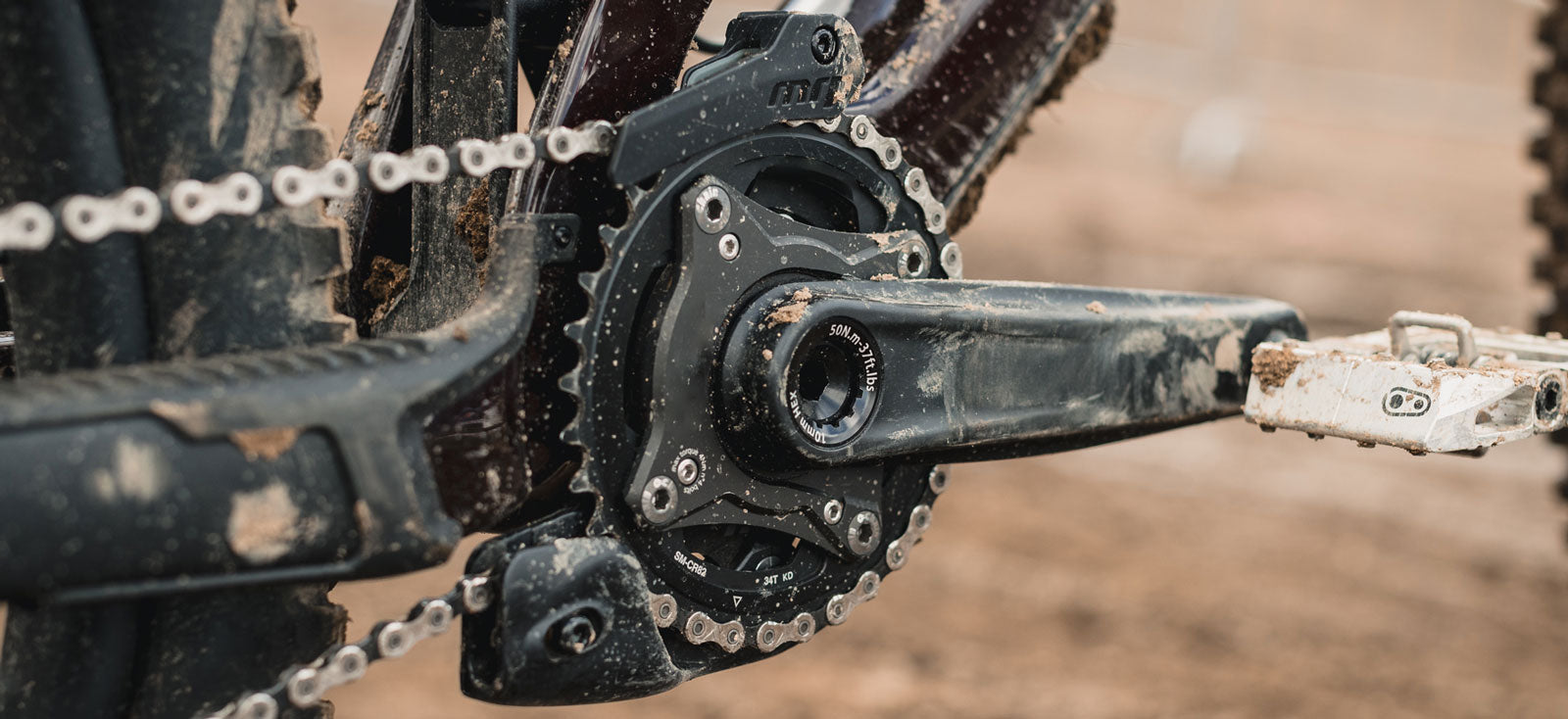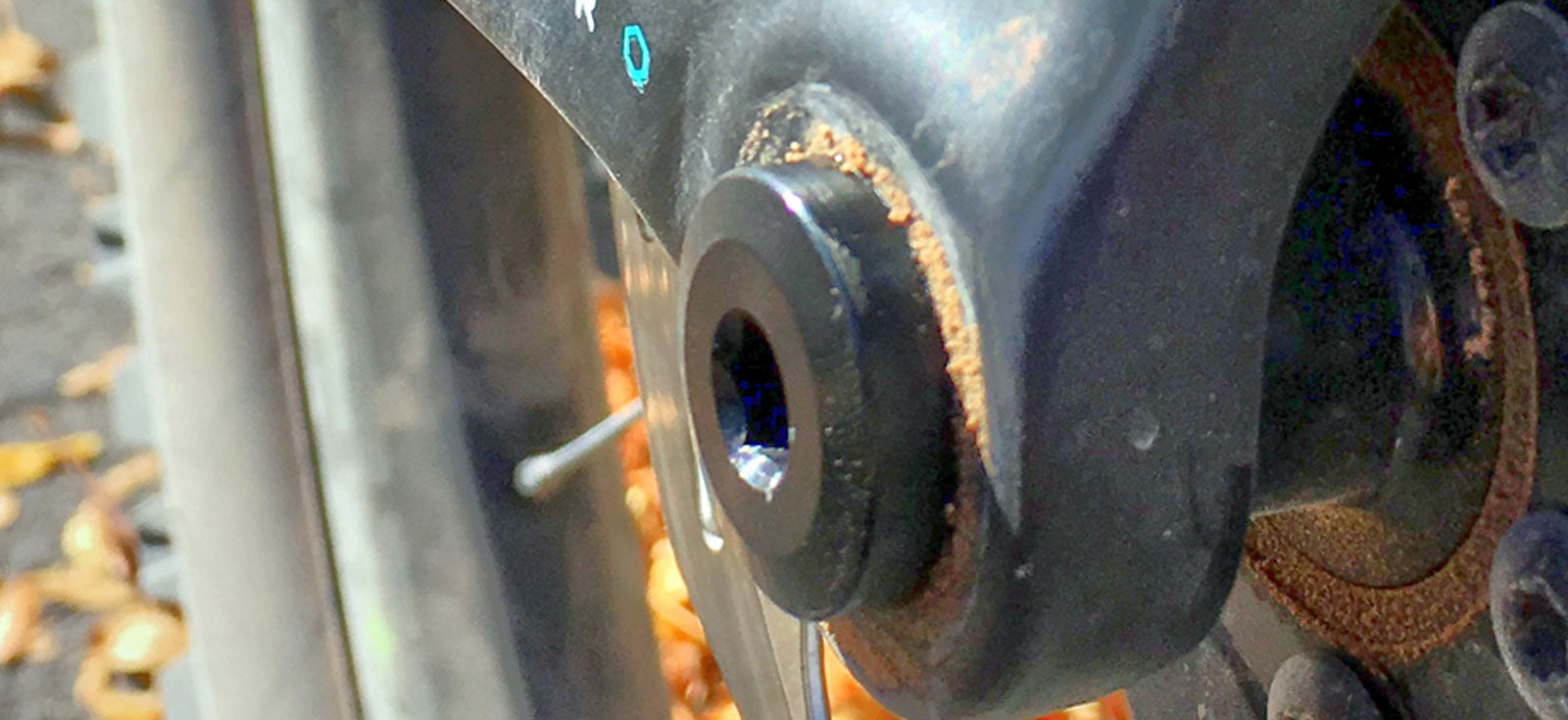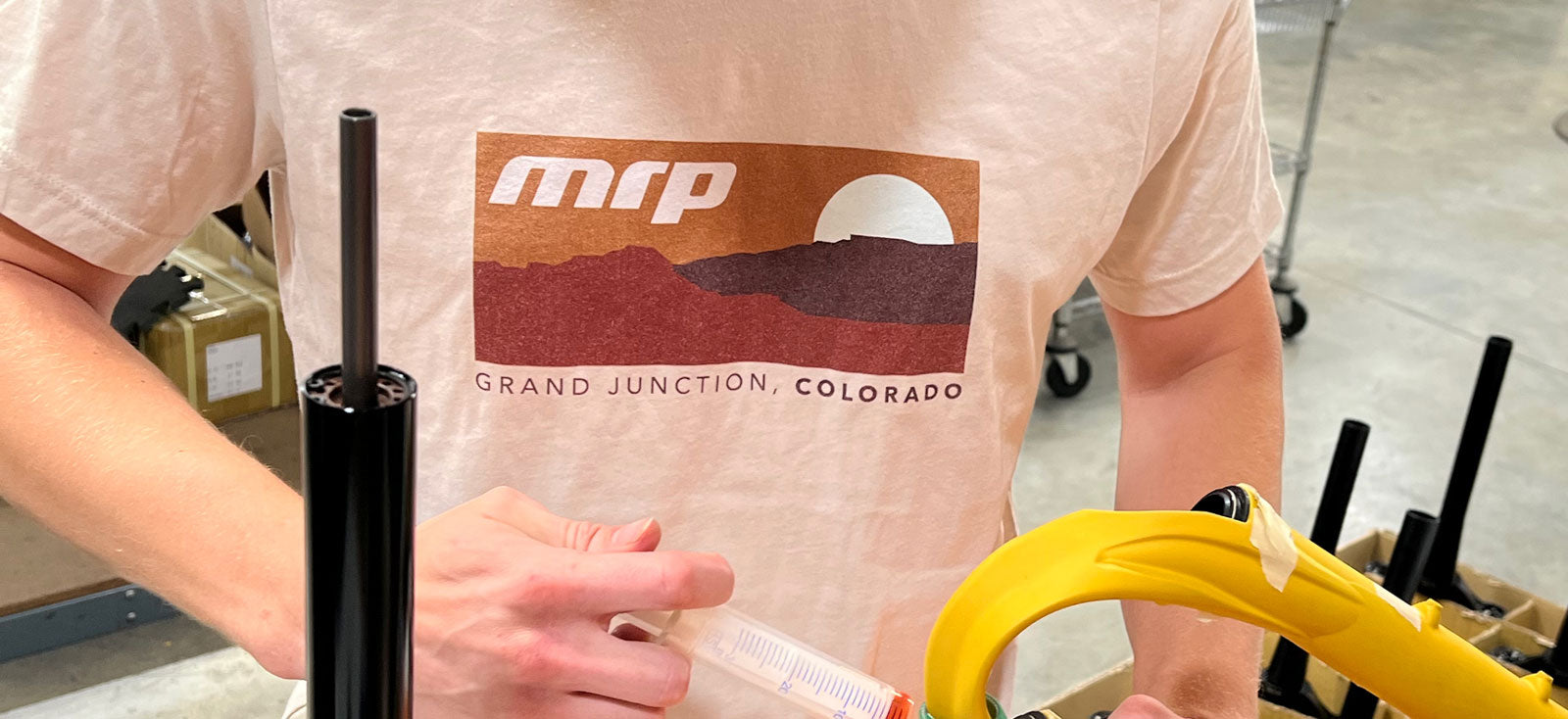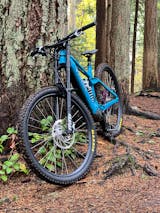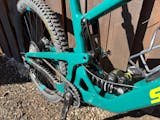Second-gen Baxter suspension fork models produced from 2021 to current.
Baxter Instructions
BEFORE YOU RIDE:
1. Inspect the entire exterior of your MRP suspension fork (fork) and/or rear shock (shock). The fork or shock should not be used if any of the exterior parts appear to be damaged. Contact your local dealer or MRP for further inspection and repair.
2. Check that your fork axle is properly adjusted and tightened.
3. Check your headset adjustment. If loose, adjust it accordingly to your bicycle manufacturer's recommendations.
4. Check that all brake cables or hoses are properly fastened and out of the way of clear operation of your fork or shock.
5. Test the proper operation of your front and rear brakes on level ground.
2. Have a qualified bicycle mechanic install your MRP suspension fork (fork) and/or rear shock (shock). It is extremely important that the fork or shock is installed correctly. Improperly installed forks or shocks are extremely dangerous.
3. Except as expressly instructed in the MRP user manual and/or service manual, do not modify your fork or shock. Modifications may cause the fork or shock to malfunction and make your bicycle unsafe to ride. Modification will also void your warranty.
4. Installing your fork requires the proper set up of your front brake. Before riding your bicycle, confirm the brakes are properly installed and adjusted (follow the brake manufacturer’s instructions for proper installation of the brake caliper). Ensure that your brake caliper mounting bolts have between 9 and 12 mm of thread engagement and are tightened to 9-10 Nm (80-90 in-lb) when installed on the fork. Failure to have proper thread engagement can damage the brake mounting posts, which can cause you to crash, and sustain serious and/or fatal injuries.
5. Before riding your bicycle confirm you are using the correctly sized wheels for your fork and bicycle. Confirm the wheels are properly installed and secured to the bicycle and are used with compatible components. Your fork is designed to secure a front wheel using a thru axle. Be sure you understand how to properly operate the fork axle. Riding a bicycle with the incorrect wheel size, improperly installed wheels, or incompatible components may allow the wheels to disengage from the bicycle, which can cause you to crash, and sustain serious and/or fatal injuries.
6. Check the tire clearance to the fork whenever you change tires. Failure to leave at least 6mm of clearance between the top of the inflated tire and the bottom of the fork crown will cause the tire to jam against the crown when the fork is fully compressed. This can lead to a crash and serious and/or fatal injury to the rider. To check tire clearance, compress the fork completely to ensure there is at least 6mm of clearance between the top of the inflated tire and the bottom of the crown.
7. Do not allow cables, housing, or brake hose to rest on or be attached to the fork crown, steerer tube, or upper tubes. Confirm internally routed cables, housing, or brake hoses DO NOT contact the steerer tube. Contact and abrasion over time could result in damage to components, loss of control, and possible serious and/or fatal injuries. Damage from abrasion is not covered under warranty.
8. Your fork or shock may fail in certain circumstances, including, but not limited to, conditions that cause a loss of oil and/or air; collisions or other activity that bends or breaks any part of the fork or shock. Extended periods of non-use may also cause your fork or shock to fail. Do not ride your bicycle if you notice: loss of oil and/or air; sounds of excessive topping out; bent or broken fork or shock parts; or any other indications of a possible fork or shock failure, such as loss of shock absorbing properties. Fork and shock failure may not be visible. If you suspect your fork or shock may be damaged, stop riding and take your bike to a qualified dealer for inspection and repair.
9. Always use genuine MRP replacement parts. Use of aftermarket replacement parts other than MRP parts voids the warranty on your fork or shock and could cause structural failure to the fork or shock. Structural failure of the fork or shock can cause you to crash and sustain serious and/or fatal injuries.
10. Follow MRP service interval instructions for maintenance and service of your fork or shock. Failure to properly service your fork or shock can result in the fork or shock not performing as designed and can cause serious and/or fatal injuries.
Operation of axle and dropout information
WHEN INSTALLING THE WHEEL OR A NEW TIRE, CHECK FOR MINIMUM CLEARANCE. RELIEVE AIR PRESSURE IN THE AIR SPRING AND COMPRESS FORK COMPLETELY TO BOTTOM OUT. THERE MUST BE 1/8” OR 3MM CLEARANCE BETWEEN THE CROWN AND HIGHEST POINT ON THE TIRE AT FULL BOTTOM OUT TO ENSURE ADEQUATE CLEARANCE IN ALL RIDING CONDITIONS.
- Seat hub into the dropouts of the fork.
- Insert axle through the disc brake side dropout, through the hub and into the captive nut on the non-disc brake side dropout.
- Using a 6mm hex tool, thread axle into the captive nut and tighten to 12-15 Nm.
EssenTTial Damper setup and tuning
LOW-SPEED COMPRESSION ADJUSTMENT
Baxter forks features the EssenTTial damper with 3 positions: open, mid, and max. Open is the preferred setting for singletrack and very rough roads. Mid provides a nice compromise between bump-absorption and effciency. Where suspension performance loses priority to overall efficiency, such as on paved roads, smooth trails, or while climbing, the low-speed compression adjustment can be turned fully clockwise to provide a "locked-out" feel. A hydraulic valve will open in this setting, however, when large bumps or other sharp compression events occur to allow the fork to move.
REBOUND ADJUSTMENT
fullfill air spring setup and tuning
MRP FULLFILL AIR SPRINGS HAVE INDEPENDENT POSITIVE AND NEGATIVE CHAMBERS AND MUST BE INFLATED AND DEFLATED IN THE CORRECT ORDER FOR PROPER FUNCTION. FOLLOW THE FILL PROCEDURE OUTLINED BELOW.
Torque Specs and Service Intervals
| TORQUE SPECS |
| REBOUND CONTROL ASSEMBLY (DAMPER-SIDE, BOTTOM) 50-55 lb-in, 6 Nm |
| SCHRADER BOLT ASSEMBLY (AIR-SIDE, BOTTOM) 70-75 lb-in, 8 Nm |
| TOOLED AXLE 105-130 lb-in, 12-15 Nm |
| DAMPER TOP CAP 240-250 lb-in, 28 Nm |
| SPRING TOP CAP 240-250 lb-in, 28 Nm |
| MAINTENANCE DESCRIPTION | FREQUENCY (HOURS |
| REPLACE BATH OIL | NORMAL CONDITIONS: 50, MUDDY CONDITIONS: 30 |
| REPLACE WIPER SEALS | NORMAL CONDITIONS: 100, MUDDY CONDITIONS: 50 |
| CHECK AIR SPRING AND RELUBE | 50 |
| CHANGE DAMPER OIL AND SEALS | 200 |
| CHECK FASTENERS | 30 |
| CHECK AIR PRESSURE | 30 |
| INSPECT STANCHIONS | EVERY RIDE |
| CLEAN DIRT AND MUD FROM STANCHIONS | EVERY RIDE |
STILL HAVE QUESTIONS?
(970) 241-3518
support@mrpbike.com
Online chat at MRPbike.com




